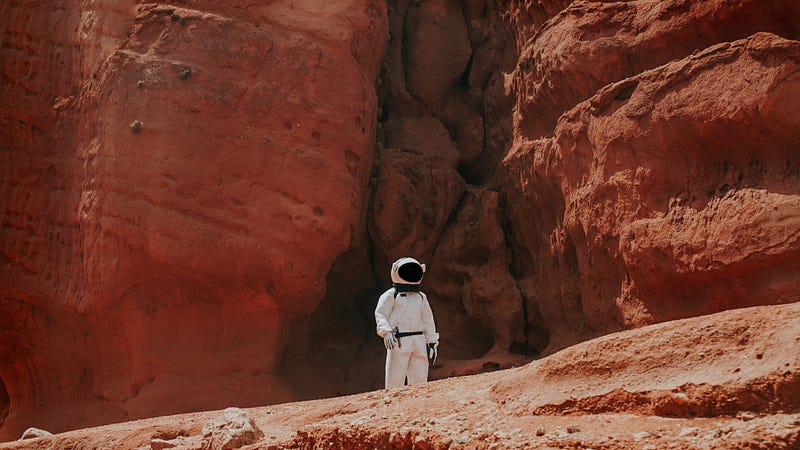# Utilizing Astronaut Blood for Concrete Production on Mars
Written on
Chapter 1: The Future of Space Exploration
Space exploration and the journey to distant planets are becoming increasingly unavoidable. The question is not whether it will be undertaken by national space agencies or private enterprises, but how. Regardless of our views on commercial space travel or billionaires embarking on space journeys for self-gratification, this pursuit represents humanity's ultimate frontier.
> “We cannot predict the new forces, powers, and discoveries that will be disclosed to us when we reach the other planets and set up new laboratories in space. They are as much beyond our vision today as fire or electricity would be beyond the imagination of a fish.”
> — Arthur C. Clarke
The advancements in technology, such as GPS, initially developed for lunar exploration, have become integral to our daily lives. While it’s crucial to care for our planet and its inhabitants, we must also extend our ambitions into space—an endeavor that could yield new technologies beneficial to all of humanity. This might include innovations that serve us well on other celestial bodies in our solar system, paving the way for deep-space travel and asteroid mining.
As companies like SpaceX develop more affordable and reusable rockets, space travel is becoming increasingly attainable. In the future, the prospect of boarding a shuttle for a trip to low-Earth orbit may become a reality, and the establishment of a lunar base could occur within decades. However, transporting construction materials remains a significant challenge.
Chapter 2: Innovative Construction Solutions
Transporting even a single brick to Mars may incur a staggering cost of over $2 million. This financial barrier makes shipping building supplies to other planets or even to orbiting space stations impractical. Fortunately, future missions could leverage astronauts' bodily fluids—along with cosmic dust—to produce concrete.
Researchers from the University of Manchester have explored this innovative idea, publishing their findings in Materials Today Bio. Creating habitats and laboratories on the Moon, Mars, or other celestial bodies is crucial for establishing enduring research outposts.
The study reveals that over 500 kg of a material dubbed "AstroCrete" could be synthesized during a two-year mission to Mars using the bodily fluids of just six astronauts.

The main breakthrough lies in a common protein found in our blood plasma, serum albumin, which serves as a binding agent for Martian dust, effectively creating concrete. Not only does AstroCrete exhibit comparable strength to traditional concrete, but incorporating additional bodily fluids could enhance its durability. For instance, adding urea—a waste product found in sweat, urine, and tears—could make AstroCrete even stronger.
During extended missions, the waste generated by astronauts could be repurposed to construct more shelters and facilities, supporting future endeavors in space. The irony of utilizing blood to establish a settlement on a red planet is not lost on anyone.
Takeaways
"Scientists have been trying to develop viable technologies to produce concrete-like materials on the surface of Mars, but we never stopped to think that the answer might be inside us all along," stated Dr. Aled Roberts in a press release.
Although it may take decades before we establish scientific outposts on the Moon or Mars, we can be confident in our preparedness. I look forward to witnessing the engineering and scientific advancements that will enable our journey into space.
As a former graduate student and journalist with a background in neuroscience and the microbiome, I have published various works in platforms such as Medium, Massive Science, Futurism, and Being Patient. If you're interested in my writing, feel free to explore more on my substack for a bi-weekly roundup of my stories or subscribe to my Medium membership for further content.